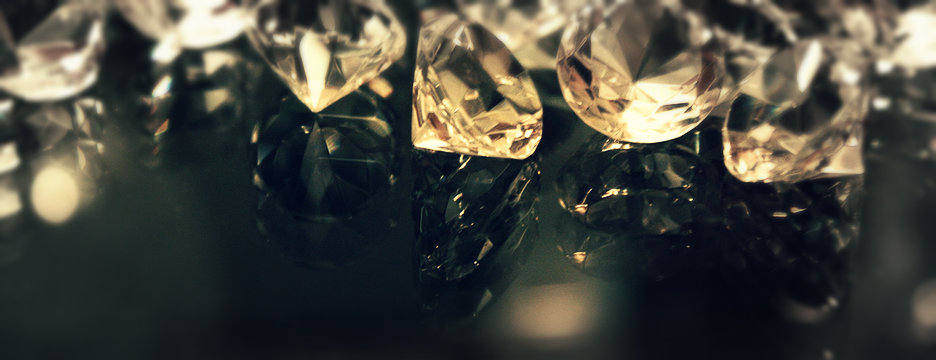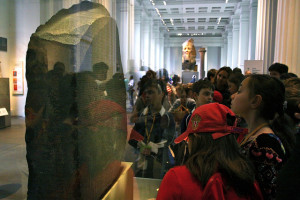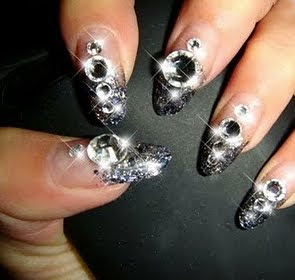The Trick to Writing Fun, Engaging Article Intros

Diamonds: Kim Alaniz
Writing article introductions is seriously hard.
The truth is, most of us start with the middle section of our story in our mind. We want to explain how to do ‘x’, or why we think ‘y’ is a great idea. Writing this part is generally easy, because we know exactly what we want to achieve.
Writing the conclusion isn’t too difficult once we’ve written the middle. We sum up what we’ve just written and perhaps add a personal insight or reflection. (* Footnote on writing conclusions below).

First lines are hard — Photo: Alastair Thompson
Article intro paragraphs are difficult for the same reason that opening lines are difficult at parties, bars and park benches. We all know how to have a conversation, but finding a smooth way to start a conversation with a stranger feels like a really high-stakes game. That’s probably explains why chat-up technique books sell tens of millions every year.
So, I guess I’m here to give you some clever chat-up lines for your readers.
So, What’s the Key to a Great Intro?
Diamonds. Or more specifically a single diamond–rather than two or three–to build your intro around. A diamond — by my definition—is a single, shining jewel designed to grab the reader's attention. It’s usually not part of your core idea, but it helps make sense of it.
For me, there are four types of diamonds you can look to use (but there may be others). I’ll run you through each one:
1 . The Clever Quote
Quote sites like Brainyquote.com are one of the fastest ways to unearth a diamond. For instance, if you’re writing about logo design, search for quotes from Saul Bass or Andy Warhol. Chances are, they said something witty, insightful and memorable at some point. Even movie quotes via IMDB can be a really fun way to kick off a dry, more technical article.
But also try to avoid the obvious option. For instance, rather than another article on ‘creativity’ quoting Steve Jobs or Einstein, try searching for ‘problem solving’ and maybe go with a quote from Apollo 13.
I don’t care about what anything was DESIGNED to do, I care about what it CAN do.
Gene Kranz — Apollo 13 (1995)
Writing a few paragraphs about what that quote means to you, and how it relates to your main theme should lead you effortlessly into the body of your piece.
2. The Intriguing Image
We all understand the power of a great image — try to find a compelling image that is at a slight tangent to your main subject.

The Rosetta Stone in context. Photo: insunlight
For instance, if you’re writing about ‘digital encryption’, rather than finding a picture of ‘matrix-like’ code, you might find a great image of the Rosetta Stone — the tablet that allowed us to finally de-code egyptian hieroglyphics.
Always avoid cliche images (sunsets, puppies, beaches, motivational poster images) unless you’re clever enough to subvert or invert the meaning.
I tend to start with Flickr’s search with ‘commercial use’ set in the filtering. Pixabay.com is handy too.
3 . The Startling Statistic
A 2-second delay in load time during a transaction results in abandonment rates of up to 87% . – Source: Radware
Numbers can speak loudly and quickly. If you can find a credible study that supports your main idea, your intro almost writes itself. Always credit and link the source (if possible), and check the date of the study — out-of-date statistics smell bad.
Typically you may only need 2 or 3 paragraphs to support a powerful number.
4. The Compelling Chart
‘The Compelling Chart’ is like the hip designer brother of the ‘The Startling Statistic’, using color and shape in the place of a pure numerical story.
It will typically be harder to find a relevant chart/graph to support your main idea, but if you get lucky, it’s a killer first punch.
If you have access to relevant statistics, it may even be worth making you own chart to support your ideas.
That’s all there is to it?
(Note that I didn’t use ‘Conclusion’ for that final subheading? *)

With Diamonds, less is more. (source)
Yes, that’s it. Write up your body idea first, then write your conclusion, and THEN spend 15 minutes hunting for your diamond – the memorable, interesting gem that will draw your readers into your real message.
And finally, if you happen to unearth two, three or more diamonds for your intro, don’t be tempted to jam them all in there.
Pick your best one, and shelve the rest for another day.
With diamonds, less is almost always more.
- * Footnote tip: When starting your article, it’s useful to label your last subheading ‘Conclusion’ in your first draft. But always try to re-title that section with something less stiff in your final draft — perhaps ‘What I learned’ or ‘The Wash-up’ or ‘Is it worth it?’.




